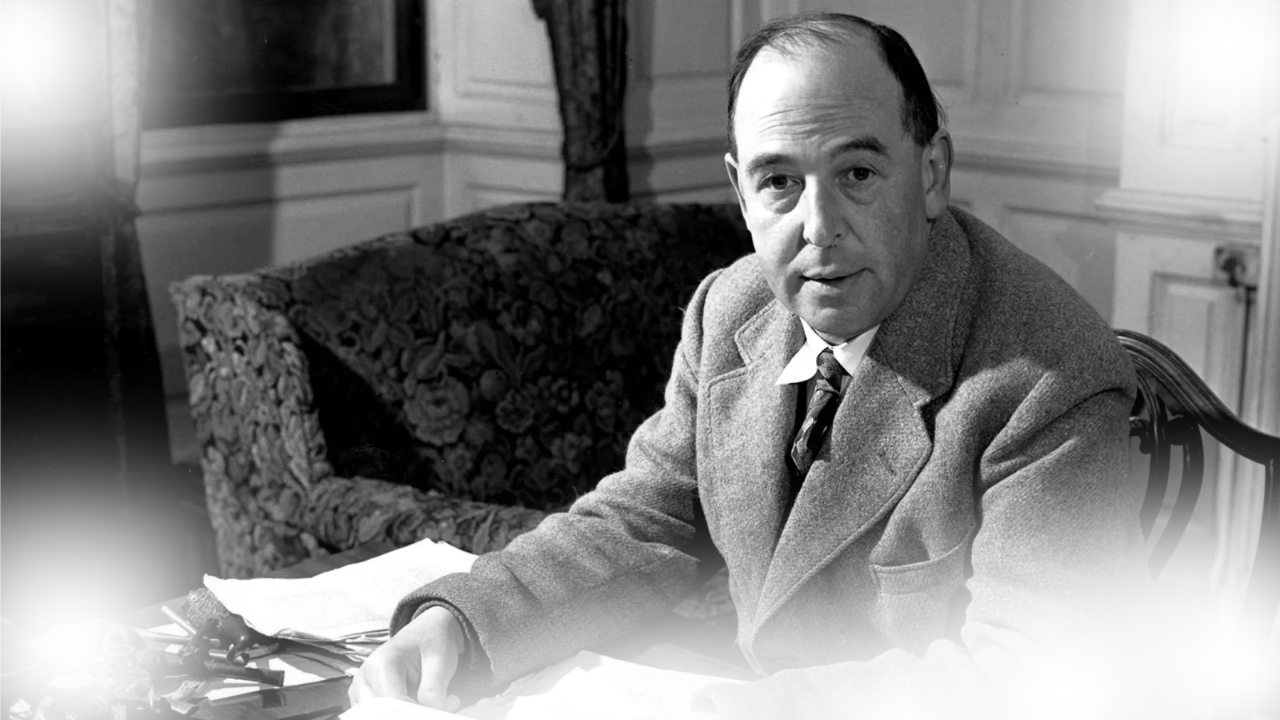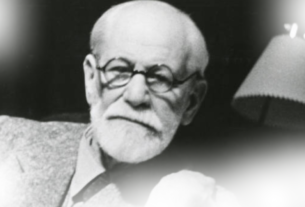Clive Staples Lewis, better known as C. S. Lewis, was a British writer, theologian, academic, and one of the most influential Christian apologists of the 20th century. Best known for his fantasy series The Chronicles of Narnia, Lewis was a scholar of medieval literature, a prolific author, and a man whose writings bridged imagination and theology in profound ways. His journey from atheism to Christianity has inspired millions, and his works continue to impact readers worldwide.
Early Life and Education
C. S. Lewis was born on November 29, 1898, in Belfast, Ireland (now Northern Ireland). He was the younger of two sons born to Albert James Lewis, a solicitor, and Flora August Hamilton Lewis, the daughter of a Church of Ireland priest. Lewis’s childhood was marked by an early love of books and fantasy. He and his older brother, Warren Hamilton Lewis (often called “Warnie”), created imaginary worlds such as “Boxen,” complete with its own maps, characters, and history.
Tragedy struck early in Lewis’s life. His mother died of cancer in 1908 when he was just 9 years old, a loss that deeply affected him and contributed to his eventual skepticism toward religion.
Lewis attended a series of boarding schools in England, some of which he found unpleasant or even brutal. His experiences during these formative years left a lasting impression on him. He later studied privately under William T. Kirkpatrick, a rigorous tutor who prepared him for Oxford University. This intense tutoring honed Lewis’s intellectual discipline and further nurtured his love for literature and philosophy.
Academic Career
In 1917, Lewis received a scholarship to University College, Oxford, but his education was interrupted by service in World War I. He was wounded in action in France in 1918. After the war, Lewis resumed his studies and excelled academically, earning top honors in Greek and Latin literature, Philosophy, and English Literature.
In 1925, Lewis became a Fellow and Tutor in English Literature at Magdalen College, Oxford, a position he held until 1954. During this period, Lewis developed a close circle of literary friends, most notably J.R.R. Tolkien, with whom he formed the informal literary group The Inklings. These gatherings at Oxford were pivotal to Lewis’s growth as a writer and thinker.
In 1954, Lewis accepted the position of Chair of Medieval and Renaissance Literature at Cambridge University, where he continued to teach and write until his retirement.
Conversion to Christianity
Though baptized in the Church of Ireland as a child, Lewis became an atheist in his teenage years, largely due to his mother’s death and his early philosophical readings. However, his worldview began to shift in the 1920s and 30s. A significant influence was his friendship with Tolkien, a devout Catholic, and other Christian intellectuals at Oxford.
Lewis described his conversion as a gradual process rather than a sudden revelation. He moved from atheism to theism in 1929 and eventually embraced Christianity in 1931. His autobiographical book, Surprised by Joy (1955), recounts his spiritual journey, emphasizing the internal struggles and eventual surrender to what he believed to be the truth.
His newfound faith became the bedrock of much of his writing. Lewis didn’t just accept Christianity passively; he engaged with it critically and creatively, becoming one of the most articulate defenders of the faith in the 20th century.
Literary Career and Works
C. S. Lewis was an incredibly versatile writer. His works span fantasy, science fiction, Christian apologetics, academic criticism, children’s literature, and autobiography. Some of his most important works include:
1. The Chronicles of Narnia (1950–1956)
Perhaps his most famous work, this seven-book series has sold over 100 million copies and been translated into over 40 languages. Blending Christian themes with mythological and fantastical elements, the series includes:
- The Lion, the Witch and the Wardrobe
- Prince Caspian
- The Voyage of the Dawn Treader
- The Silver Chair
- The Horse and His Boy
- The Magician’s Nephew
- The Last Battle
The series has been adapted into stage plays, television series, and major motion pictures.
2. The Space Trilogy (1938–1945)
This science fiction trilogy includes:
- Out of the Silent Planet
- Perelandra
- That Hideous Strength
These novels explore themes of good vs. evil, free will, and the spiritual state of the universe in a futuristic context.
3. Christian Apologetics
Lewis’s works defending Christianity are considered some of the finest examples of modern Christian apologetics. These include:
- Mere Christianity (1952): A logical, accessible defense of Christian beliefs.
- The Problem of Pain (1940): Addresses the age-old question of why a good God allows suffering.
- Miracles (1947): A philosophical case for the supernatural.
- The Screwtape Letters (1942): A fictional set of letters from a senior demon to a junior tempter, offering insight into human nature and temptation.
4. Other Works
- The Great Divorce (1945): A fictional allegory about heaven and hell.
- A Grief Observed (1961): A raw and deeply personal account of Lewis’s grief after the death of his wife.
Personal Life
C. S. Lewis remained unmarried for much of his life, focusing on his academic and literary pursuits. However, in his later years, he developed a close relationship with Joy Davidman Gresham, an American writer and former atheist who had converted to Christianity partly due to Lewis’s writings.
They married in 1956 in a civil ceremony to allow her to remain in the UK. When Joy was diagnosed with terminal cancer, they had a Christian marriage ceremony at her hospital bedside. Despite the tragedy, Lewis found unexpected joy and companionship in their relationship. Joy died in 1960, and her loss deeply affected him. A Grief Observed is a poignant record of his mourning.
Death
C. S. Lewis died on November 22, 1963, at the age of 64, just one week before his 65th birthday. Remarkably, his death went largely unnoticed in the press at the time because it occurred on the same day as the assassination of President John F. Kennedy and the death of Aldous Huxley, the author of Brave New World.
Lewis passed away in Oxford and is buried at Holy Trinity Church, Headington, Oxford.
Net Worth
C. S. Lewis did not accumulate wealth by modern standards, especially when compared to contemporary authors of similar fame. Much of his income came from book royalties, and he lived modestly. He donated a significant portion of his earnings to charity and supported various causes through a trust called The Agape Fund.
At the time of his death in 1963, Lewis’s net worth is estimated (adjusted for today’s value) to have been around $1–2 million USD. However, his posthumous earnings have been substantial due to continued book sales and film adaptations of The Chronicles of Narnia. The estate, now managed by his stepson Douglas Gresham, continues to generate income from licensing and royalties.
Legacy and Influence
C. S. Lewis’s legacy spans literature, theology, education, and popular culture. His writings have introduced generations of readers to the richness of Christian thought, moral reflection, and imaginative storytelling. Some aspects of his legacy include:
1. Literary Contribution
Lewis’s work on medieval and Renaissance literature remains respected in academic circles. His blending of scholarly analysis with accessibility made him a unique figure in 20th-century literature.
2. Christian Apologetics
Lewis is one of the most quoted Christian thinkers in modern apologetics. His works like Mere Christianity and The Screwtape Letters are considered essential reading in both evangelical and academic Christian circles.
3. Pop Culture Impact
The Narnia series has left an indelible mark on pop culture, with adaptations across film, TV, and stage. In 2005, The Lion, the Witch and the Wardrobe film grossed over $745 million worldwide, introducing Lewis’s world to a new generation.
4. Inspiration to Writers and Thinkers
Lewis influenced many authors and thinkers, including:
- J. R. R. Tolkien (though their relationship had tensions)
- Philip Yancey
- Tim Keller
- Madeleine L’Engle
- Francis Collins
5. The C. S. Lewis Foundation and Institutes
Organizations like the C. S. Lewis Foundation and The Wade Center at Wheaton College continue to study and promote his works. Conferences, seminars, and retreats are held in his honor, including visits to The Kilns, his home in Oxford.
Interesting Facts
- Lewis disliked the name “Clive” and insisted on being called “Jack” from a young age.
- He never learned to drive and relied on walking or public transportation.
- Lewis and Tolkien once discussed writing a time travel novel and a space novel, which led to Lewis’s Space Trilogy and Tolkien’s The Lost Road (unfinished).
- The Lion, the Witch and the Wardrobe was not the first Narnia book written in chronological order; The Magician’s Nephew serves as the series’ prequel.
- Despite being deeply religious, Lewis was critical of religious institutions and favored personal faith over organized dogma.
Final Thoughts
C. S. Lewis was a brilliant mind, a gifted writer, and a humble servant of his convictions. His work continues to resonate because of its timeless exploration of truth, imagination, and the human condition. Whether through Narnia’s wardrobe or the rational clarity of Mere Christianity, Lewis invites us to a world where faith and reason, myth and meaning, coexist beautifully.
His life reminds us that intellectual rigor and heartfelt faith can walk hand in hand — and that stories, at their best, can bring us closer to understanding ourselves, the world, and something greater beyond it.
Would you like this formatted as a blog post or maybe converted into a downloadable PDF or DOC file?



